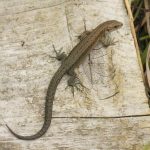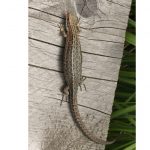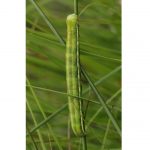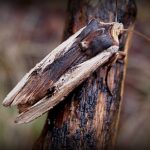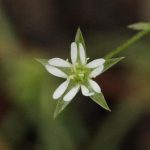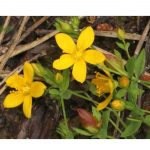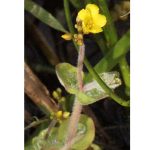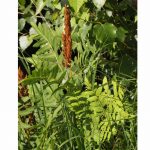The meeting at Thursley, led by Ken and Sarah White, followed a week of very heavy showers, but fortunately the rain all but held off and we were lucky enough to get away with just one heavy afternoon shower. The group of 11 started by looking at the Common Wintergreen Pyrola minor in the car park, noting the distinguishing feature that the style did not extend beyond the petals. We then set off along the boardwalk, having to tread carefully to avoid the Common Lizards Zootoca vivipara [formerly Lacerta vivipara] basking along the edge, some of which were distinctly pregnant.
Plants in flower here included Lesser Bladderwort Utricularia minor, Round-leaved and Oblong-leaved Sundew Drosera rotundifolia and D. intermedia, Meadow Thistle Cirsium dissectum, Marsh Orchids Dactylorhiza sp., White-beaked Sedge Rhyncospora alba and Bog Asphodel Narthecium ossifragum. A Hobby made a brief appearance ahead of us and did a spectacular vertical dive while a Curlew called overhead. The rare bracket fungus , Phellinus pini was pointed out, easily overlooked, growing out of one of the Scots Pines Pinus sylvestris around which the boardwalk was built.
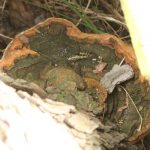
Invertebrates were in short supply in the somewhat dull conditions, though a Small Red Damselfly Ceriagrion tenellum and a Raft Spider Dolomedes fimbriatus carrying its egg sac were seen.
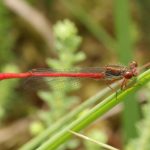
An impressively huge green caterpillar, 50mm long, found on a clump of Purple Moor-grass Molinia caerulea was later identified as the larva of the Red Swordgrass Xylena vetusa. The record is a valuable one since it proves that this species has actually bred at Thursley; until now it was considered a vagrant only at this site. After it has pupated it will look like the adult moth pictured below right.
The group then followed the heathland trail around the edge of the bog with flowering Cross-leaved Heath Erica tetralix and Bell Heather E. cinerea. A Tree Pipit posed briefly in the pines before we found the benches at Shrike Hill for lunch; two Hobbies and distant Buzzards performed for us as we munched. There wasn’t sufficient sunshine to tempt butterflies to fly, though a single fresh Silver-studded Blue Plebejus argus perched obligingly on the Ling Calluna vulgaris while we looked for the silver spots along the edge of its underwing.
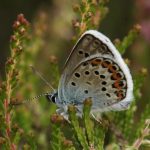
The tiny Bog stitchwort Stellaria alsine was in flower in the wet woodland alongside Trailing St John’s-wort Hypericum humifusum. On the return path we caught up with a family of Redstarts and had good views of recently-fledged young. We also heard a Dartford Warbler singing and had close views of two birds, a female and a fledgling, as they fed in the bottom of a gorse bush. The last notable plants of the day were the aquatic Marsh St John’s-wort Hypericum elodes and a fine clump of royal fern Osmunda regalis growing on the edge of a ditch.
Report by Ken and Sarah White, pictures by Ken White

